The one-bite appetizer known as Miang Kham is a delightfully unique and delicious Thai dish. With many different ingredients wrapped together in a wild pepper leaf, it truly contains all of the flavors in one bite!
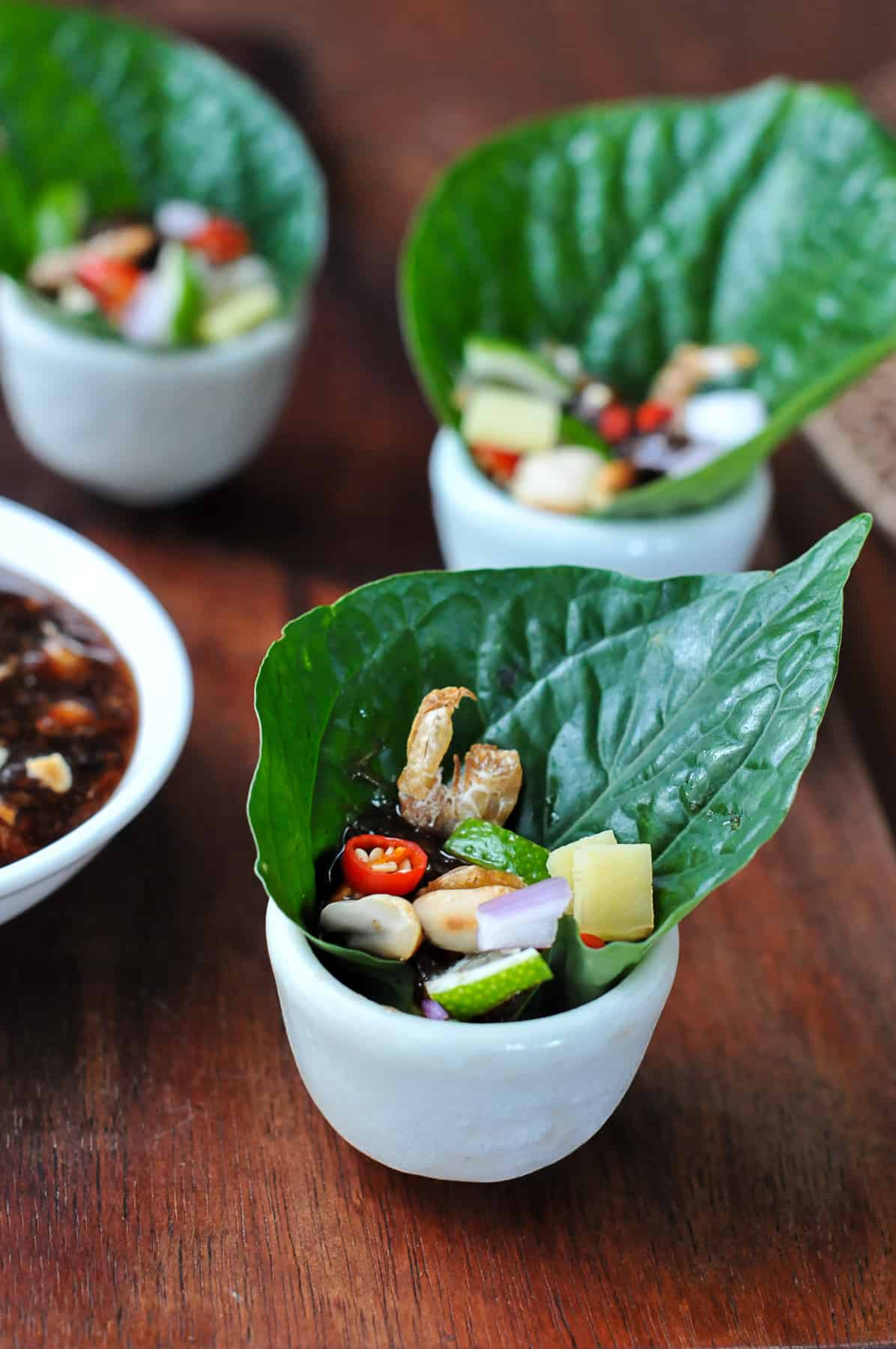
If there's one dish that embodies bold Thai flavors, Miang Kham would be it. This appetizer features spicy ginger and Thai chilis, sour lime, salty dried shrimp, aromatic shallots, and nutty toasted peanuts and coconut. These ingredients are placed on a slightly bitter, peppery leaf and drizzled with a sweet and savory sauce. Then the whole package is eaten in one bite, allowing for an explosion of Thai flavors in your mouth.
Miang Kham does exactly what an appetizer is meant to do -- stimulate every single one of your taste buds and make you want more!
Jump to:
What is Miang Kham?
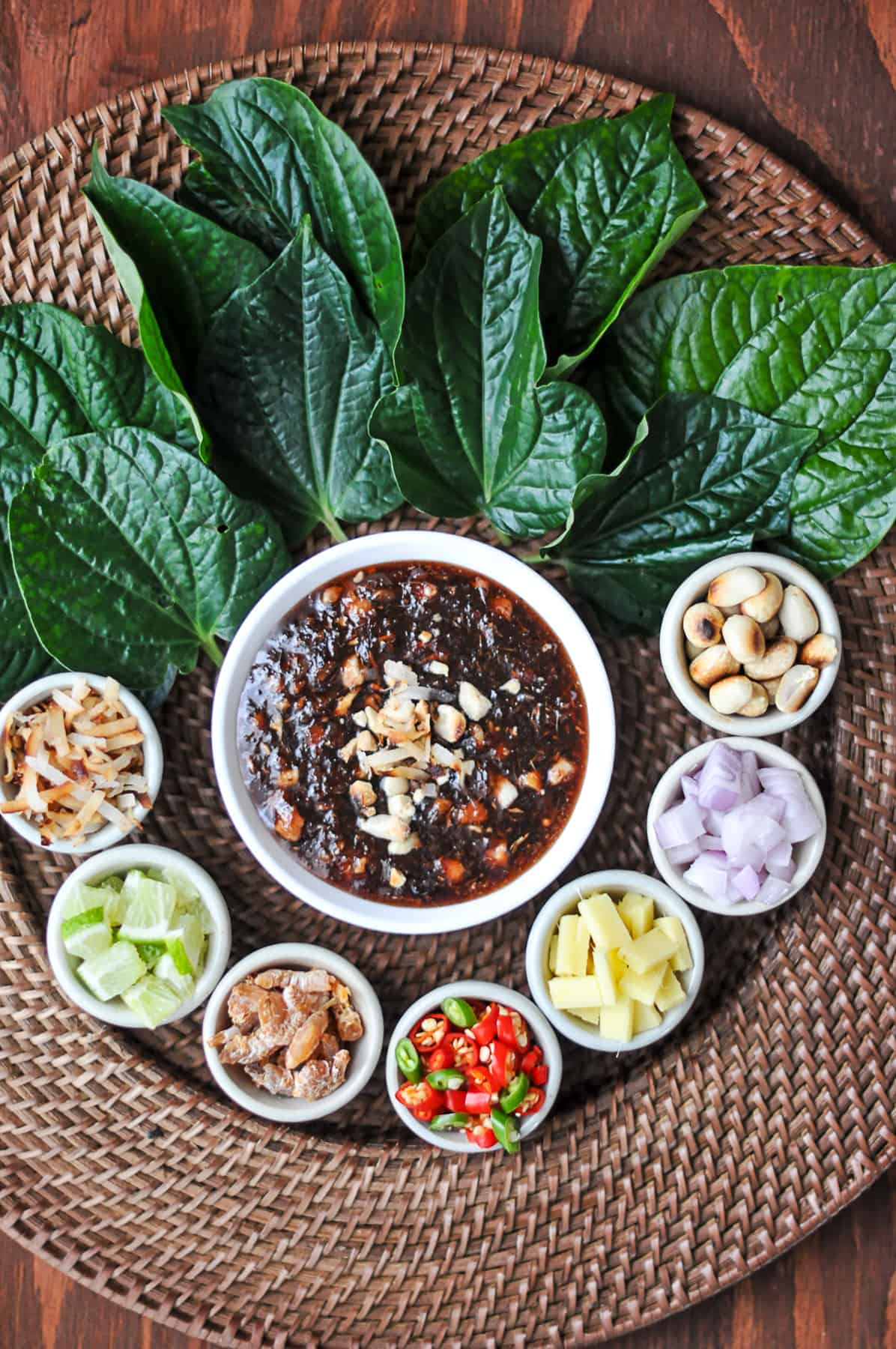
Miang Kham is a Thai dish that's eaten either as an appetizer or as a snack between meals. Small cubes of various fresh and toasted ingredients are served alongside a sweet and savory sauce and a pile of fresh leaves. Each diner is meant to take a leaf, place the ingredients they'd like in it, and drizzle the sauce on top. Then the leaf is wrapped up and eaten in one bite, allowing all of the disparate flavors to be enjoyed at the same time. It is said to have originated in the North of Thailand, and can now be found all throughout the country.
What does Miang Kham mean?
In Thai, the word Miang is used to describe appetizer-like snacks which consist of various ingredients wrapped in leaves. There are many different types of Miang (such as Miang Pla made with fried fish). Kham means bite in Thai, presumably because this Miang is meant to be eaten in one bite.
The Leaves
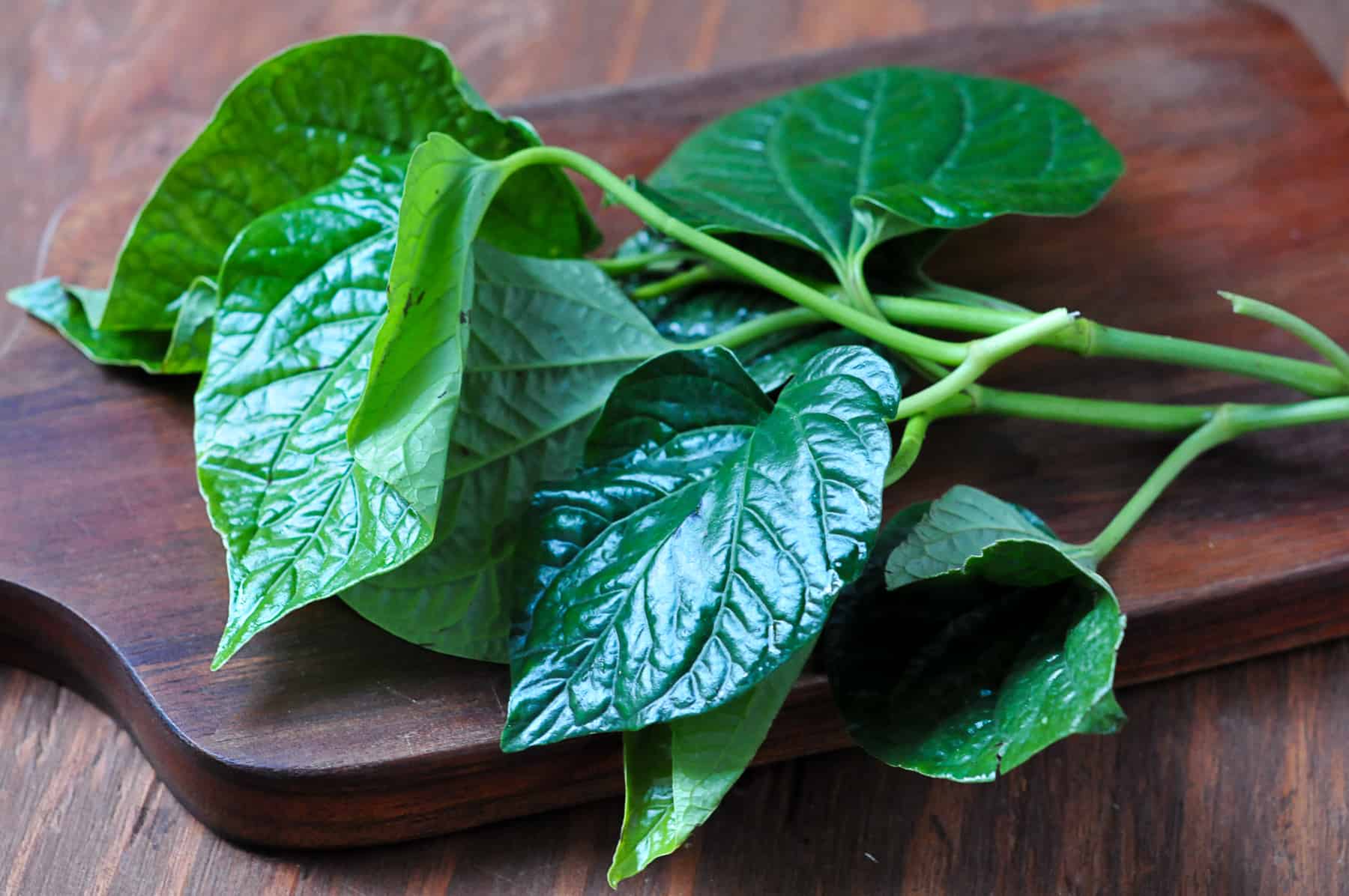
The leaves used for wrapping Miang Kham are wild pepper leaves (scientific name: Piper sarmentosum). In Thai, they are known as Bai Cha Plu (ชะพลู). They're also sometimes called Bai Miang, since they are commonly used for Miang Kham. In Vietnamese, these leaves are known as La Lot. In English, they can also be found labeled as wild betel leaves, but they should not be confused with betel leaves.
Wild pepper leaves are shiny, green, and heart shaped. They have a very distinct venation pattern, which helps to distinguish them from betel leaves. They are fairly thin and tender, and impart a subtle spicy and slightly bitter flavor to Miang Kham.
Unfortunately, wild pepper leaves can be challenging to find outside of Southeast Asia. Your best bet will be to look in stores that cater to the Southeast Asian population. Romaine lettuce or Chinese broccoli (Gai Lan) can be used in place of wild pepper leaves for Miang Kham, with the understanding that they really don't have the same flavor.
Fresh Ingredients
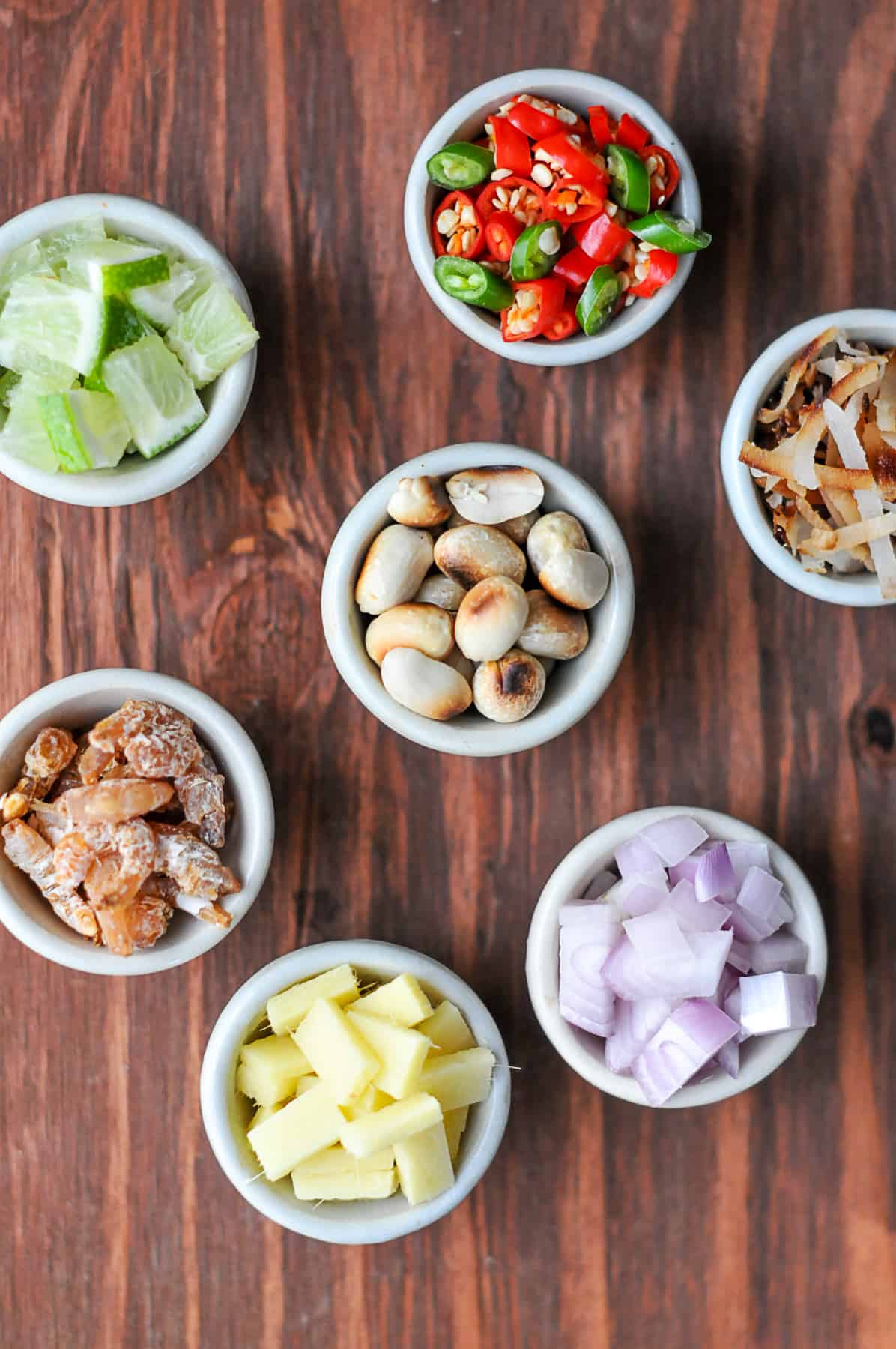
The ingredients that make up Miang Kham are meant to stimulate all of your taste buds, from spicy Thai chilis to sour pieces of lime. Here's a run down of all of the fresh and toasted ingredients that go into this appetizer:
- Thai chili peppers: As Thai chili peppers are quite spicy, you'll want to slice them very finely. You can use gloves while doing this so that your hands don't burn. If your diners prefer less spice, they are welcome to make their Miang without any peppers.
- Lime: In Thailand, small cubes of lime are cut with the skin on for a burst of fresh citrus flavor. If you can find a lime with very thin skin, feel free to do the same. If your lime has thicker skin, it's probably best to cut the rind off before slicing it into small pieces.
- Ginger: Fresh ginger adds a nice bite of mild spice to the dish. Using the freshest ginger you can find, peel the skin off and cut into small cubes.
- Shallots: Shallots add a nice aromatic earthiness to the dish. They should also be peeled and cut into small cubes.
- Roasted peanuts: Freshly roasted peanuts impart a lovely nutty, toasted flavor to each bite of this appetizer. Follow the directions in the article linked for how to prepare freshly roasted peanuts by dry frying them in a pan.
- Toasted coconut: Likewise, toasted coconut adds a wonderful toasted, nutty, tropical flavor. You can toast them in the same manner as the peanuts. Be sure to use unsweetened coconut flakes rather than the sweetened variety.
- Dried shrimp: Dried shrimp add a salty, umami crunch. To bring out its flavor and make it a little crunchier, dry fry it in the same way you do for the peanuts and coconut.
The Sauce
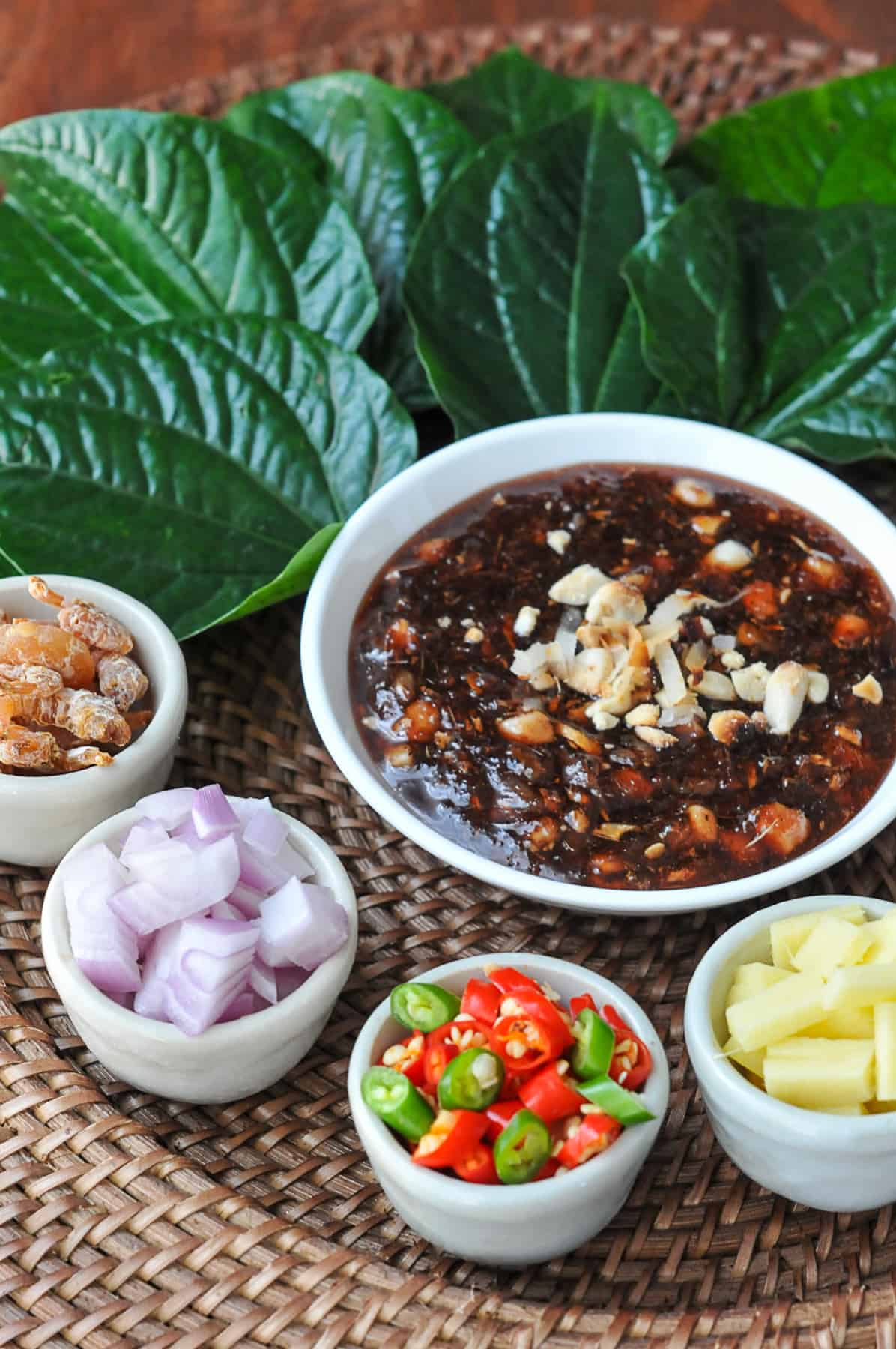
The sauce for Miang Kham is a caramelized sweet and savory sauce. The base flavors of the sauce are shrimp paste and palm sugar, making it sweet and funky at the same time. Aromatic herbs including galangal, shallots, ginger, and lemongrass are pounded together, and roasted peanuts and toasted coconut flakes are also stirred in. Because the sauce incorporates some of the fresh ingredients, it helps to tie all of the disparate flavors together.
How to Make the Sauce
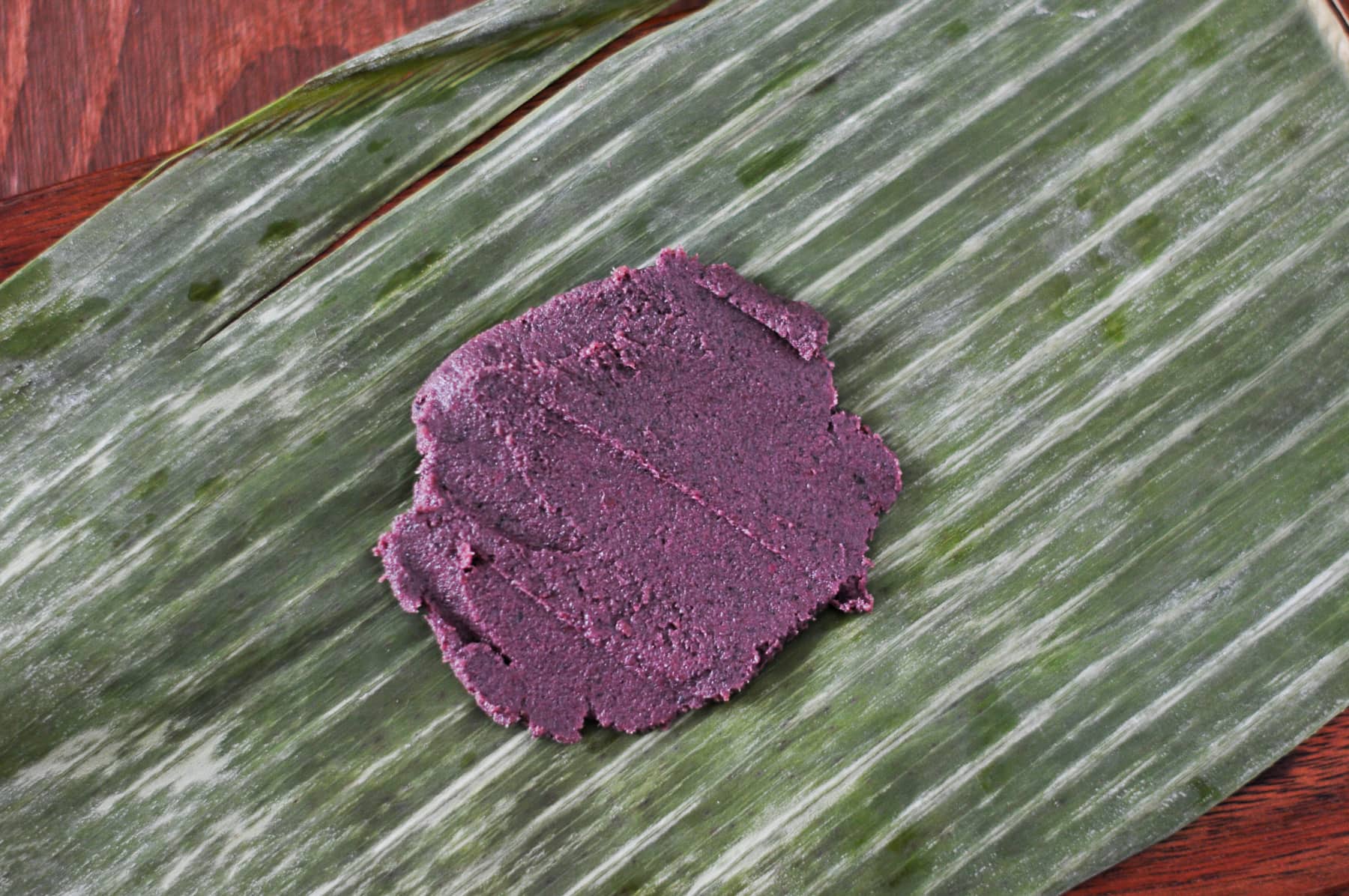
Step 1: Start by roasting the shrimp paste. Spread it in a thick layer onto the surface of a banana leaf. Fold the leaf into a package, and place it in an oven for approximately 10 minutes at 350 degrees. Foil can be used if banana leaves are not available.
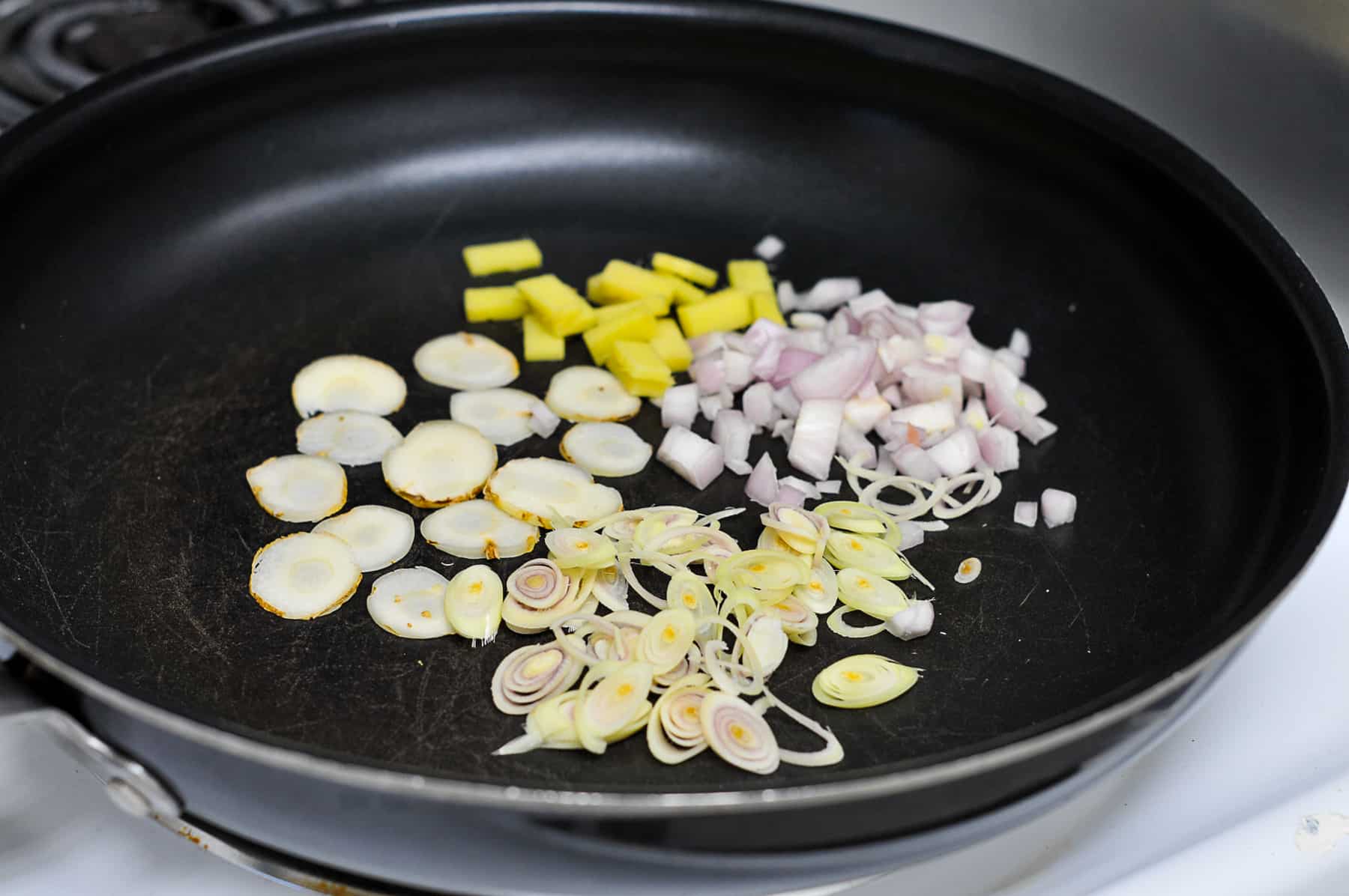
Step 2: While the shrimp paste is roasting, cut the galangal, ginger, shallots, and lemongrass into small pieces. Roast these herbs by placing them in a pan over medium heat on the stove, and occasionally stirring until they are fully dried out and toasted.
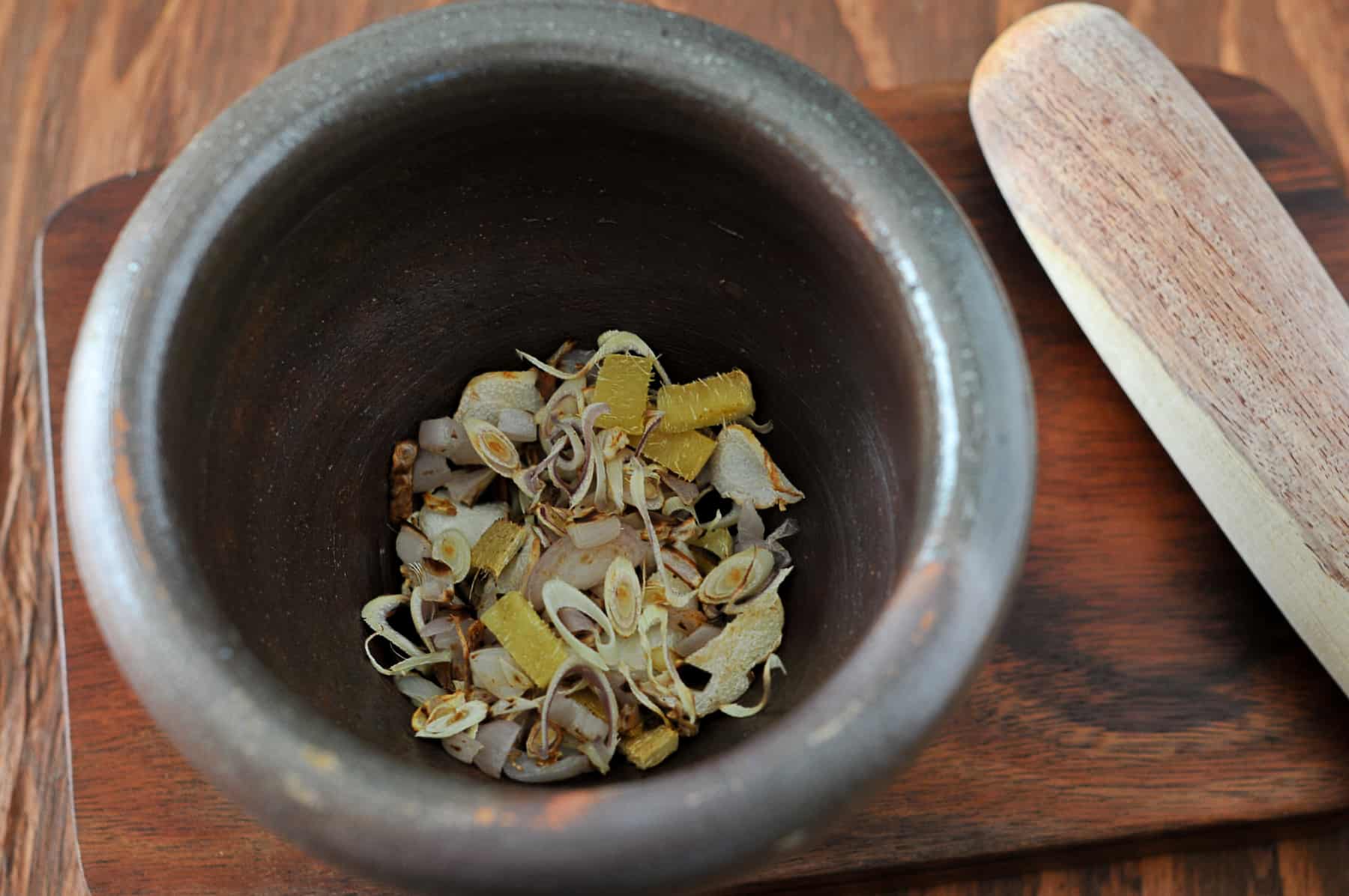
Step 3: Place the roasted herbs in a mortar and pestle and pound until a coarse paste is formed. Then add the roasted shrimp paste and continue to pound until the paste is smooth.
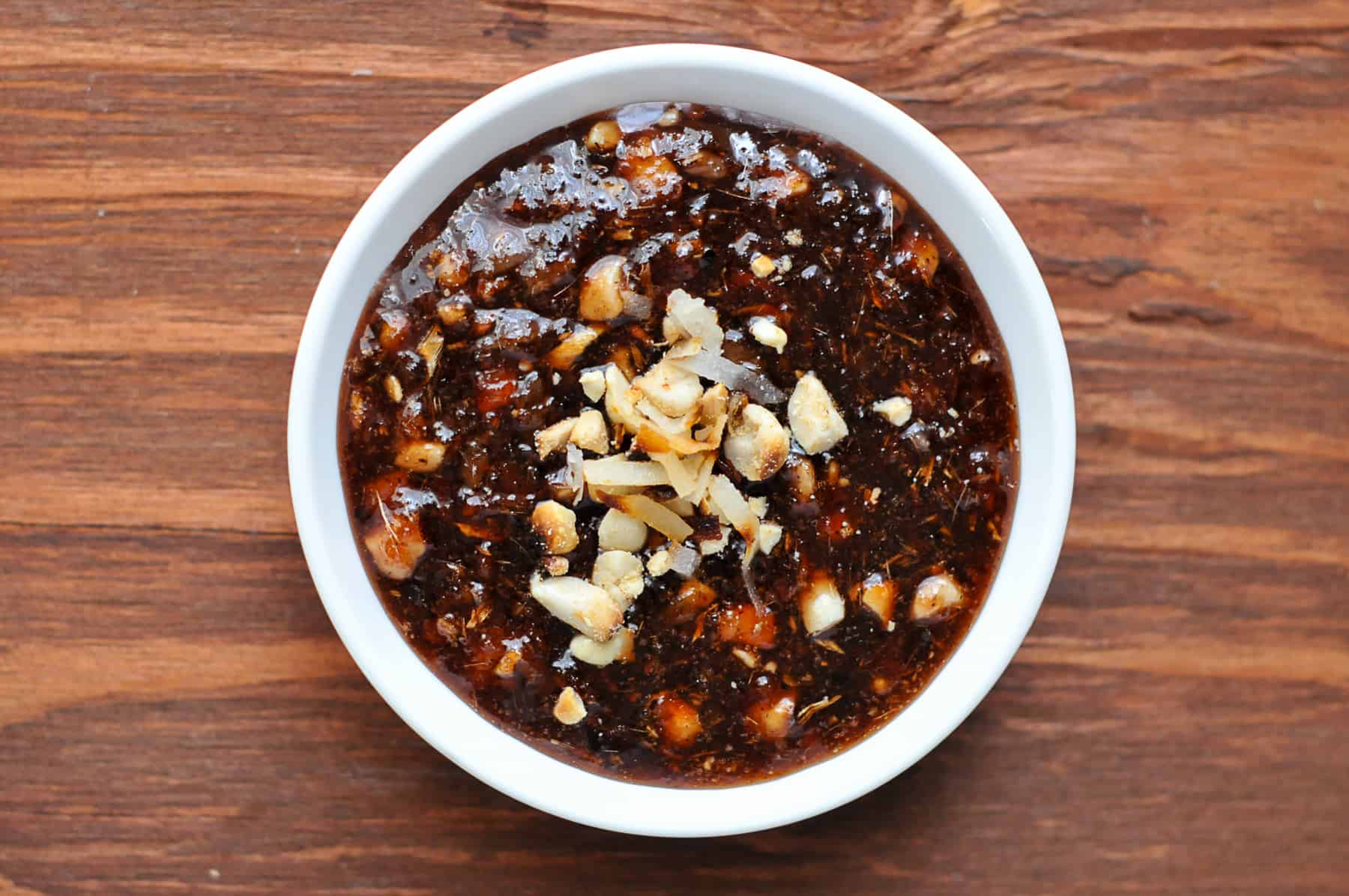
Step 4: In a small saucepan, heat the paste you have just prepared with fish sauce and palm sugar over medium heat. Continue to cook until a slightly sticky sauce is formed. Stir in the toasted peanuts and toasted coconut flakes.
How to Serve Miang Kham
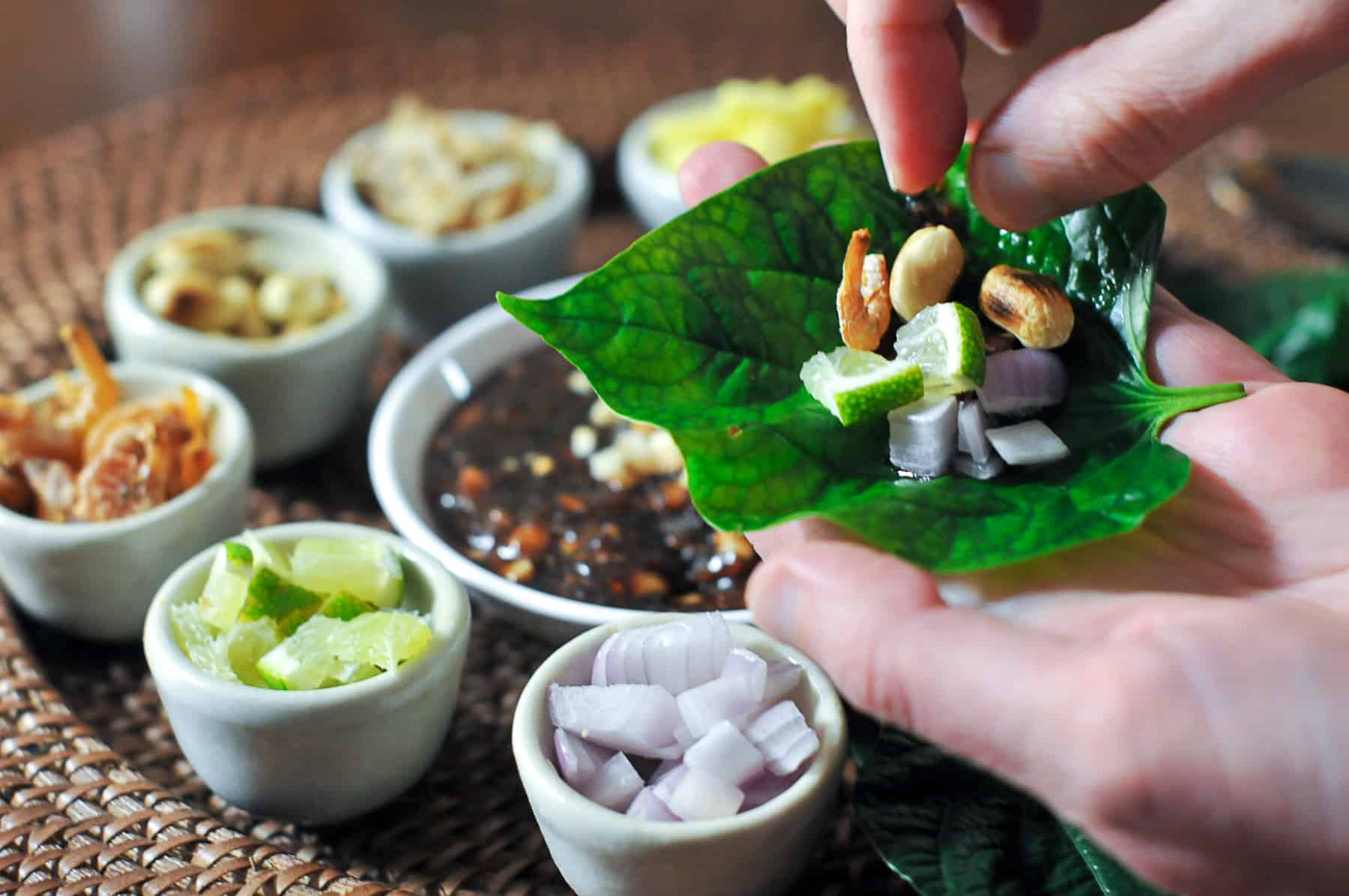
Miang Kham is often served on a large platter, with a bowl of sauce in the middle and the fresh ingredients and wild pepper leaves surrounding it. That way, you can choose a leaf, add a dollop of sauce, and then choose which ingredients you'd like to add. I'd suggest trying it with one of each ingredient first, then adjusting the amounts for your next wrap based on your taste preferences.
If you are serving Miang Kham to people who aren't familiar with Thai food, it's a good idea to warn them that Thai chilis are quite spicy! I accidentally failed to do so once. My friend added a few too many chili pieces and subsequently had smoke coming from her ears!
In Thailand, you can find Miang Kham already put together into little parcels. The wrapped leaf packages are sometimes threaded together on a skewer, perfect for eating on the go.
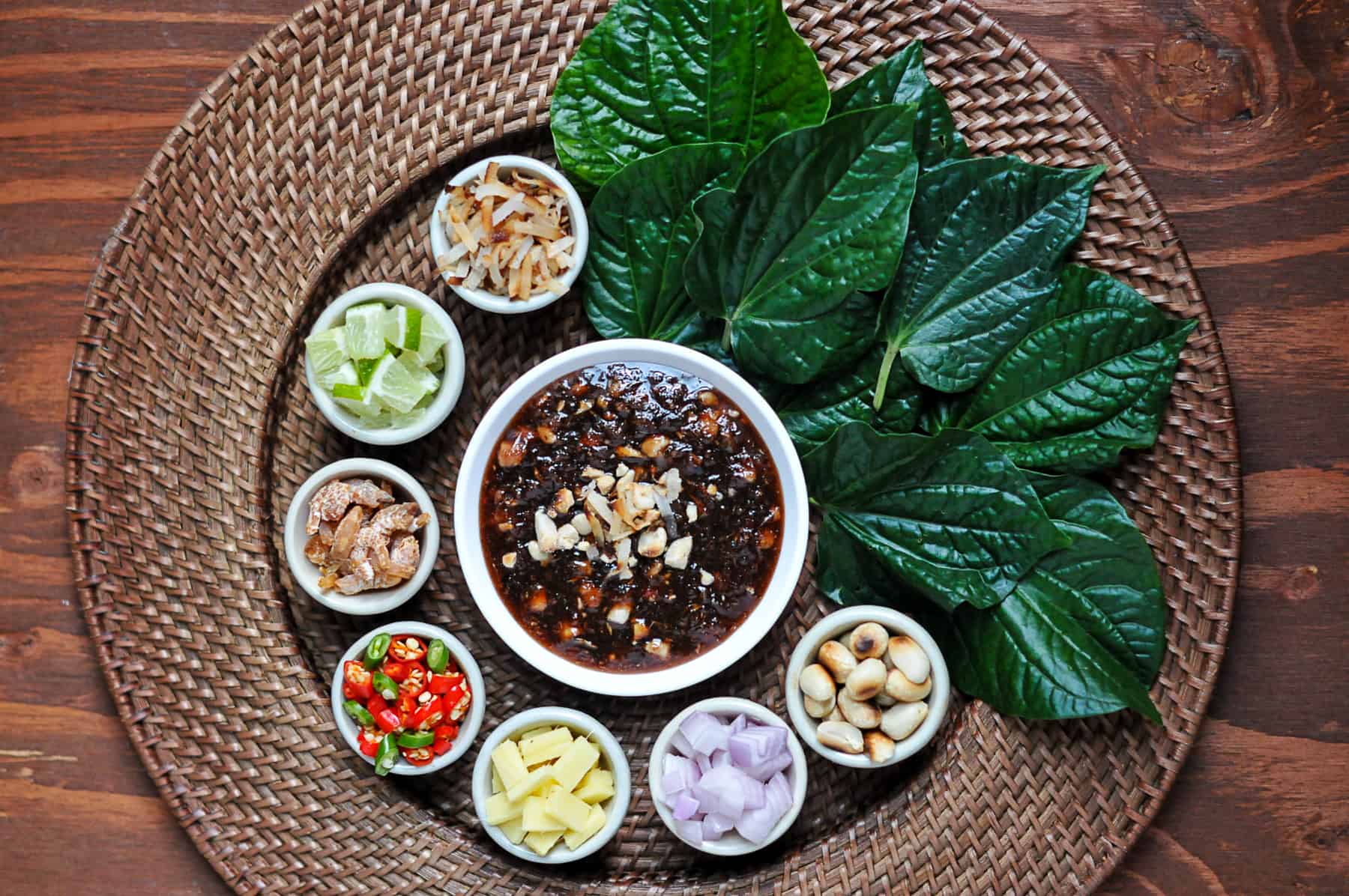
Miang Kham FAQs
The Thai word Miang is used to describe appetizer-like snacks which consist of various ingredients wrapped in leaves. The Thai word Kham means bite, presumably because this Miang is meant to be eaten in one bite.
Miang Kham is composed of various fresh ingredients and a sweet and savory sauce wrapped in a wild pepper leaf. The sauce contains a good amount of palm sugar. Aside from the sugar content, I believe most people would consider miang kham to be a healthy appetizer.
To eat Miang Kham, choose a wild pepper leaf, add a dollop of sauce, and then choose which fresh ingredients you'd like to add. You can wrap the leaf into a little parcel and then pop the whole thing into your mouth.
In Thailand, you can find Miang Kham already put together into little parcels. The wrapped leaf packages are sometimes threaded together on a skewer, perfect for eating on the go.
Goes Well With...
Miang Kham is the perfect one-bite appetizer to stimulate your taste buds and leave you wanting more. It could be served as an appetizer before any number of Thai main dishes. Here are some you may consider:
Craving more? Subscribe to Rachel Cooks Thai to get new Thai recipes delivered straight to your inbox! And stay in touch on Facebook, Pinterest and Instagram for all of the latest updates.
Recipe
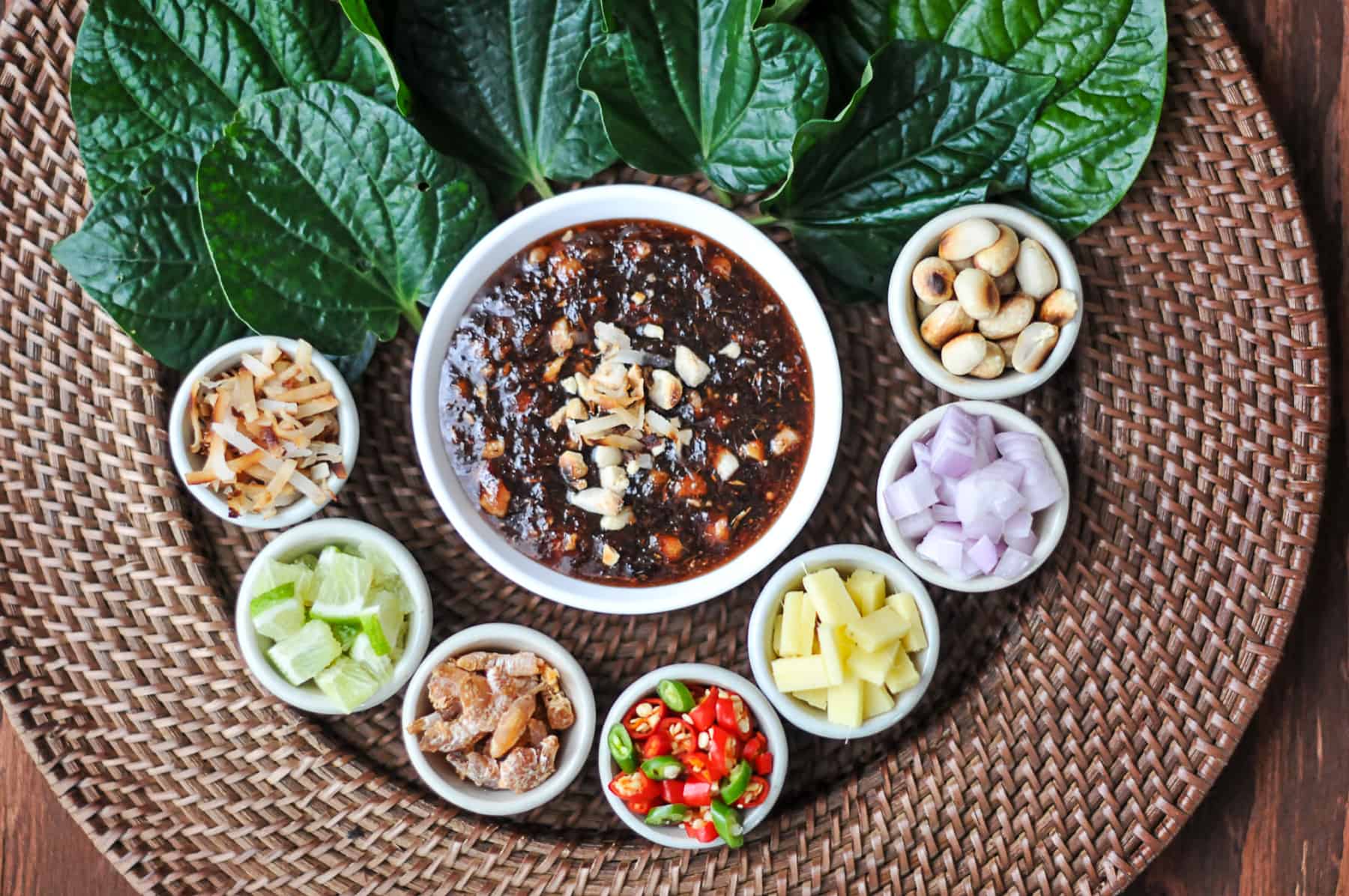
Miang Kham
Ingredients
For the Sauce:
- 1 Tablespoon galangal
- 2 Tablespoons shallots
- 1 Tablespoon ginger
- 2 Tablespoons lemongrass
- 1 Tablespoon shrimp paste
- 2 Tablespoons fish sauce
- ½ cup palm sugar
- 1 Tablespoon toasted coconut flakes
- 1 Tablespoon roasted peanuts
For the Appetizer:
- 20 wild pepper leaves
- 2-5 Thai chili peppers
- ¼ cup lime segments
- ¼ cup shallots
- ¼ cup ginger
- ¼ cup roasted peanuts
- ¼ cup toasted coconut
- ¼ cup toasted dried shrimp
Instructions
To Make the Sauce:
- Start by roasting the shrimp paste. Spread it in a thick layer onto the surface of a banana leaf, fold the leaf into a package, and place it in an oven for approximately 10 minutes at 350 degrees. It will be done when the banana leaf is charred. Foil can be used if banana leaves are not available.
- While the shrimp paste is roasting, cut the galanga, ginger, shallots, and lemongrass into small pieces. Roast these herbs by placing them in a pan over medium heat on the stove, and occasionally stirring until they are fully dried out and toasted.
- Place the roasted herbs in a mortar and pestle and pound until a coarse paste is formed. Then add the roasted shrimp paste and continue to pound until the paste is smooth.
- In a small saucepan, heat the paste you have just prepared with fish sauce and palm sugar over medium heat. Continue to cook until a slightly sticky sauce is formed. If it becomes too sticky, water can be added to thin it out.
- Once the sauce is ready, stir in chopped toasted peanuts and toasted coconut flakes.
To Make Miang Kham:
- Wash the wild pepper leaves and pat dry.
- Prepare the peanuts, coconut, and dried shrimp by roasting them separately in a pan over medium heat. Be sure to use raw peanuts and unsweetened coconut flakes, if available, for the best results. Remove these ingredients once they are toasted and let them cool.
- Prepare the fresh ingredients by slicing them into small bite-sized pieces. The peppers can be sliced very thinly and the limes should be sliced into wedges with their skin still intact.
- To eat this appetizer, take one wild pepper leaf and spread a dollop of sauce in the middle. Then add the rest of the fresh and toasted ingredients to the leaf, wrap it so that they don't fall out, and pop it into your mouth. Enjoy the burst of fresh flavors!










David Lynch
The sauce was a bit of work but very much worth the effort - it was delicious! Instead of Thai shrimp paste I used some belacan from a block that I have & toasted it in a dry pan .
I also found it hard to find beetle leaves so I ordered some seedlings online & now I can pick some leaves whenever I feel like treating my household to Miang Kham. They make a great indoor hanging plant.
Melbourne, Australia.
Lillian
I am looking online to buy seeds of the wild betel and not finding any except out of the USA. Do you have any sources?
Rachel
Hi Lillian, I'm not aware of a source of seeds online. I am fortunately able to find the leaves at my local Thai/Lao market, and they grow remarkably well by rooting the leaf cuttings. If you live nearby a market with these leaves, I'd definitely suggest trying to propagating them from the leaves.
Janna
Hey Rachel! Just wanted to say that your blog is so awesome and helpful!!!!!
Rachel
Thanks Janna! That's so nice to hear!
Grace
I hv planted a lot of the leaves too. I tried the recipe fm friend before n it was nice. Anyone wants free supply of the leaves, write to me
Cheers, Grace
Leigh
Rachel love your work and the vibe of your blog! The sauce for this dish came up a treat nice work, takes me back to a recent adventure in Thailand. Next on the list is the ever elusive Pad Thai one which Ive never completely nailed but Ill look forward to trying again under your instruction.
Cheers Leigh
Rachel
Thanks, Leigh!
Don M
I grow this plant. it was a lucky accident, I though I was buying a peppercorn plant. I have plenty of leaves if anyone can't fund them locally
Janis Woolpert
I love this dish. I enjoy it with large spinach leaves.
Goldie
This looks yummy! But betel leaves have cancerogens. What would you use as a substitute?
Rachel
Hi Goldie, these "wild betel" leaves are often confused for "betel" leaves, but they are not the same thing. Kasma Loha-Unchit has a fantastic post about the difference between the two leaves.
Bibs @ Tasteometer
I've heard of these leaves many times, they are even listed in a spanish recipe book I have, but never been able to get them either.
Sounds like the perfect appetiser for my tastebuds too.